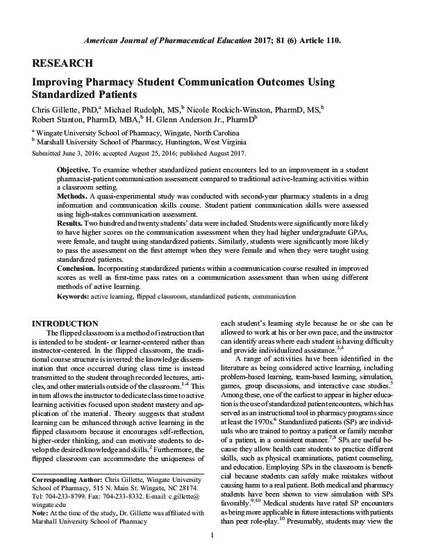
Objective. To examine whether standardized patient encounters led to an improvement in a student pharmacist-patient communication assessment compared to traditional active-learning activities within a classroom setting.
Methods. A quasi-experimental study was conducted with second-year pharmacy students in a drug information and communication skills course. Student patient communication skills were assessed using high-stakes communication assessment.
Results. Two hundred and twenty students’ data were included. Students were significantlymore likely to have higher scores on the communication assessment when they had higher undergraduate GPAs, were female, and taught using standardized patients. Similarly, students were significantly more likely to pass the assessment on the first attempt when they were female and when they were taught using standardized patients.
Conclusion. Incorporating standardized patients within a communication course resulted in improved scores as well as first-time pass rates on a communication assessment than when using different methods of active learning.

The copy of record is available from the publisher at https://www.ajpe.org/doi/abs/10.5688/ajpe816110.
Copyright © 2017 American Association of Colleges of Pharmacy. Reprinted with permission. All rights reserved.